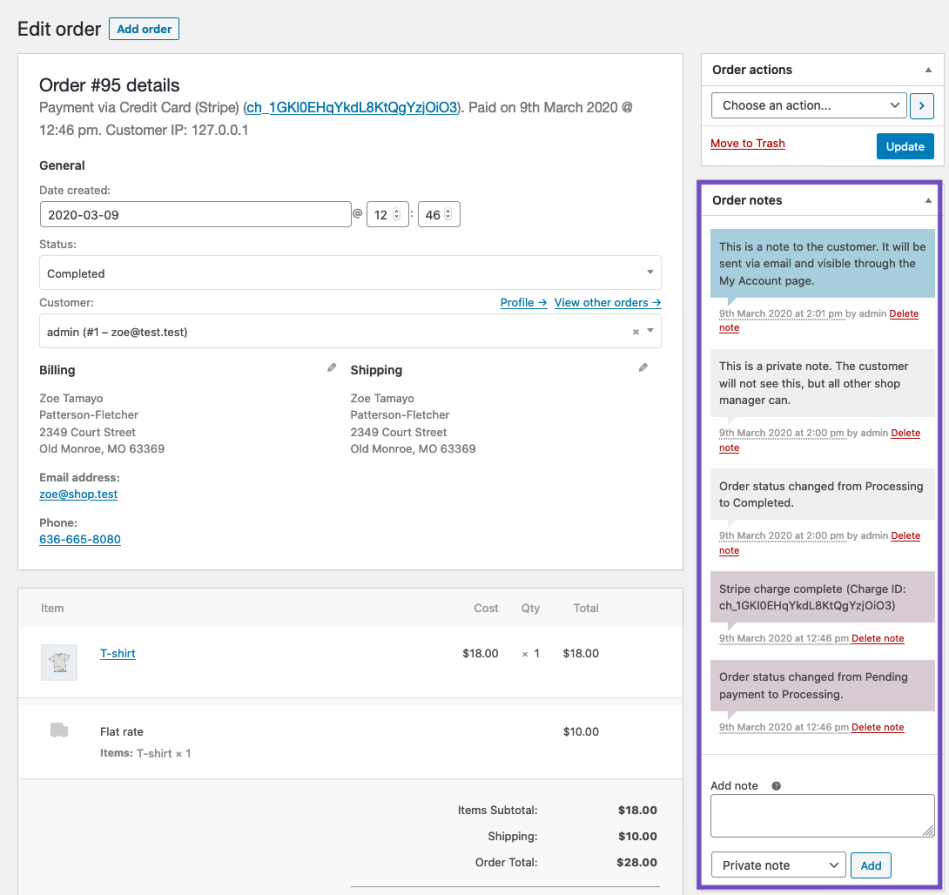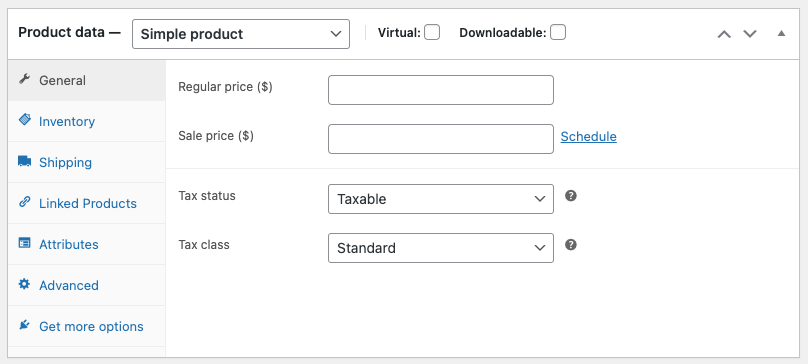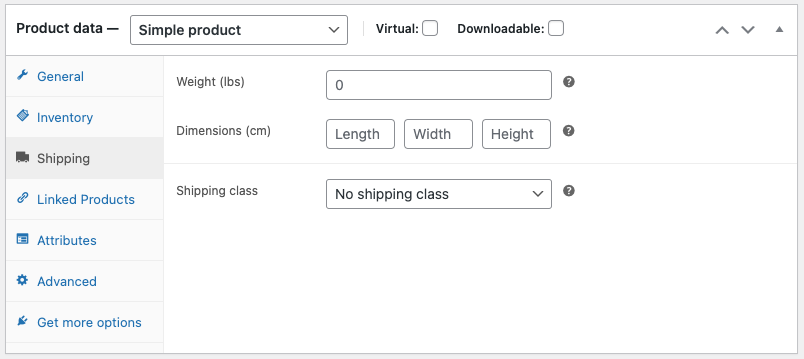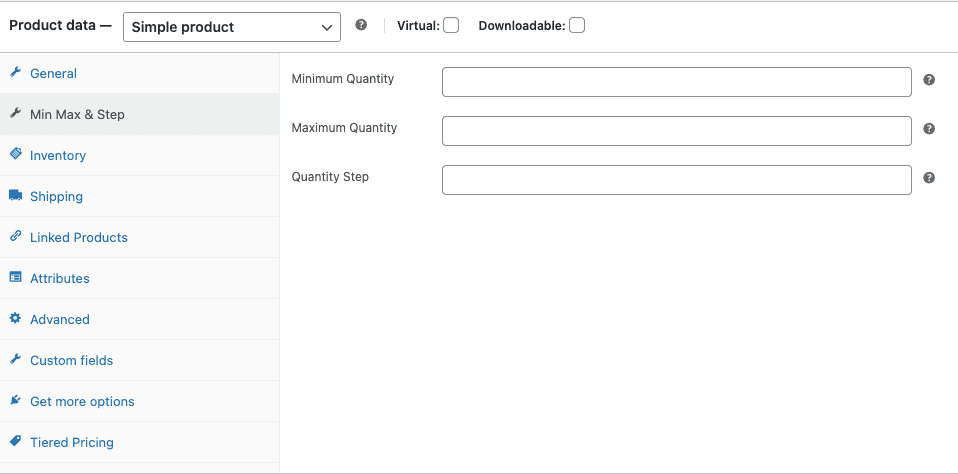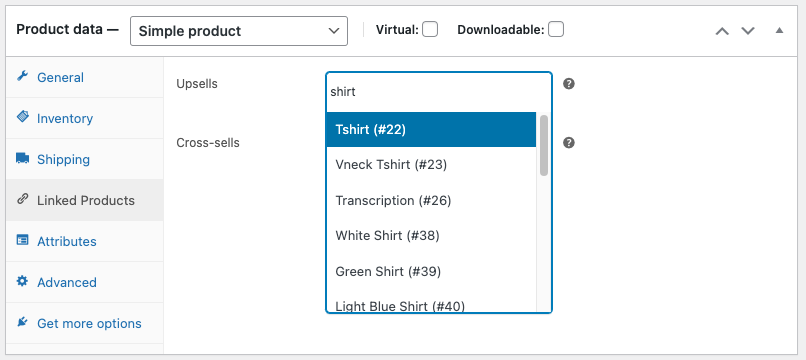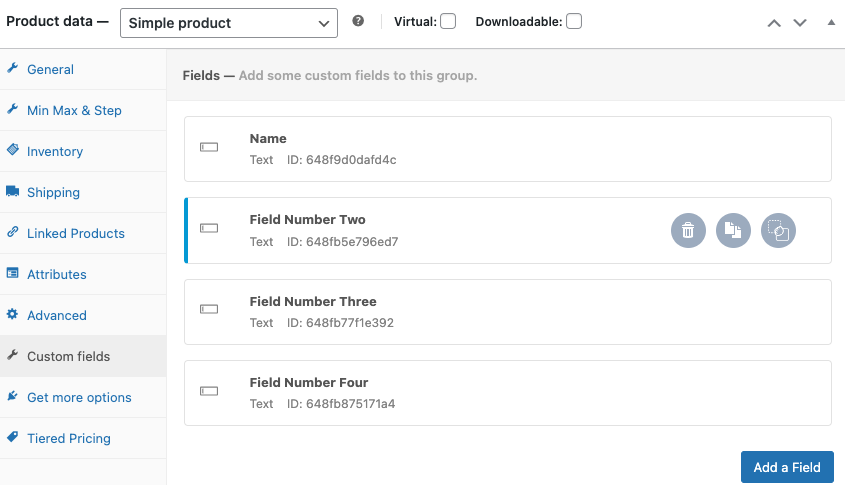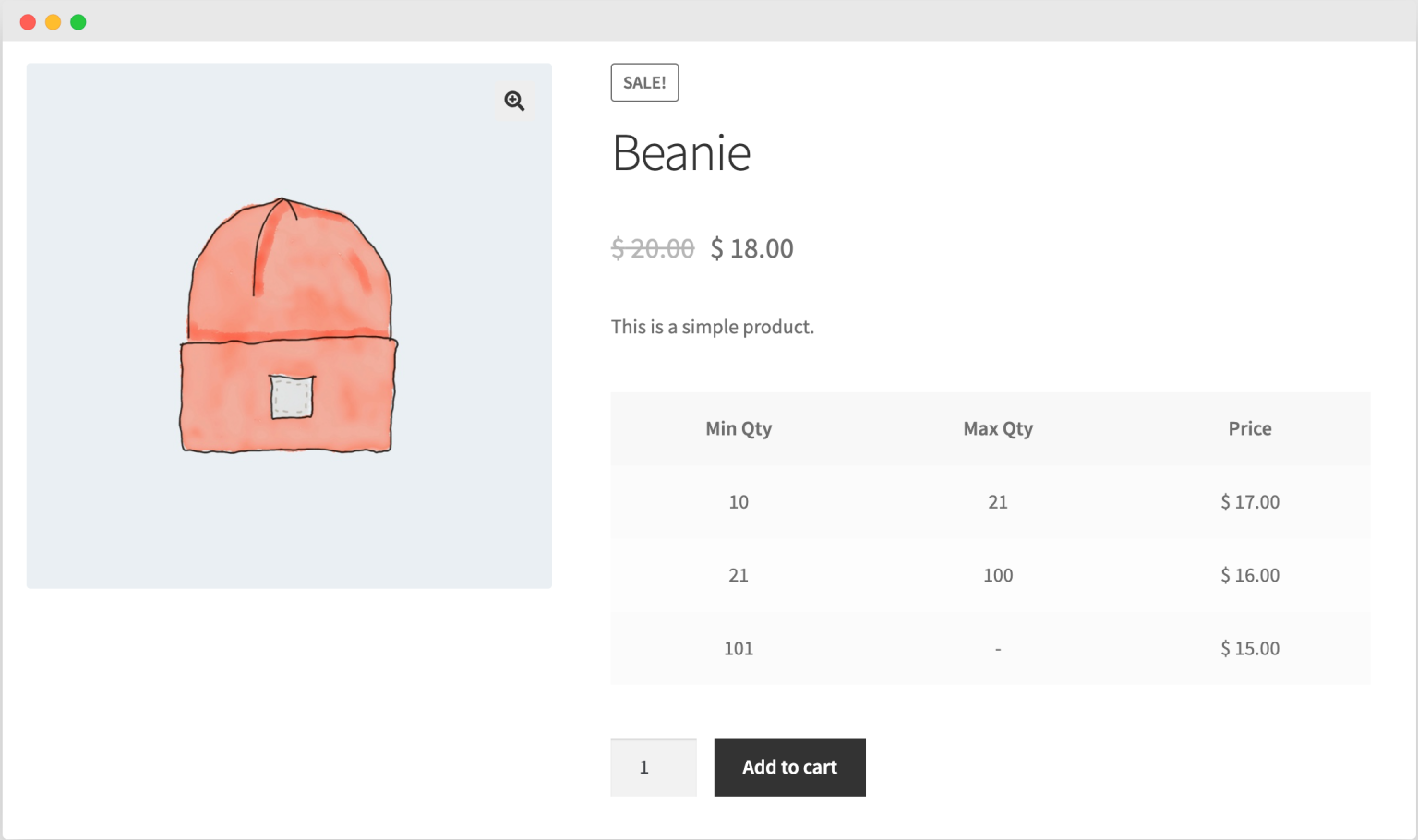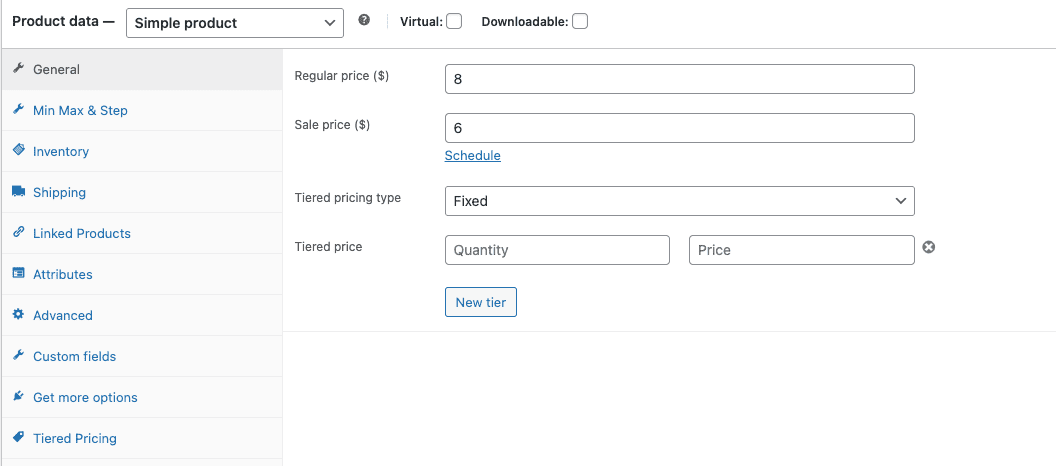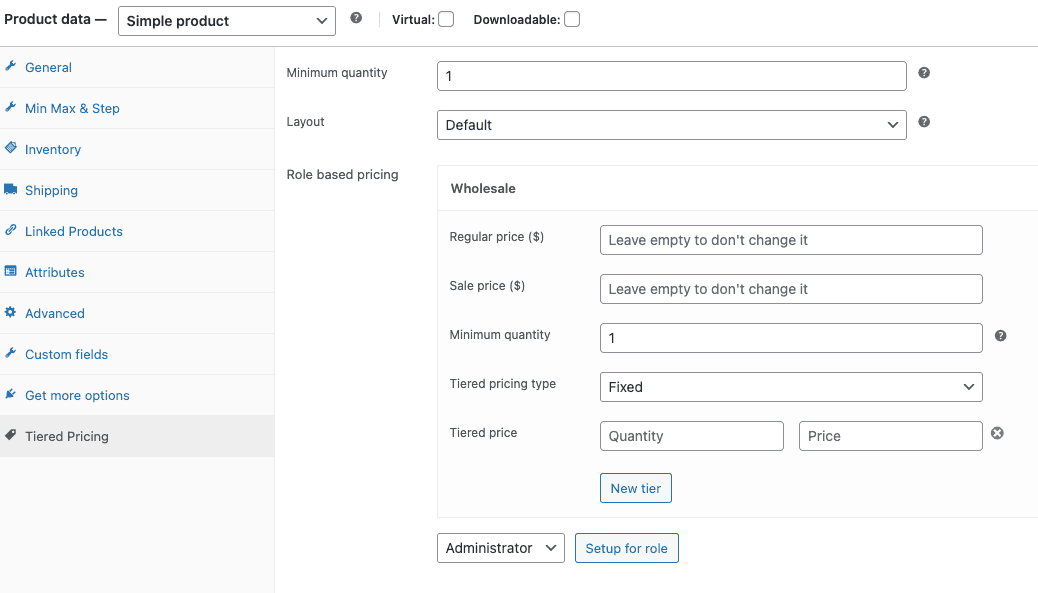Import Products using .csv formate file
You can update the attributes of the product using .csv files.
WordPress allows you to upload CSV to override the details of the product.
These are the attributes you can change with the help of CSV for a particular or bulk product.
Product Pricing
- Regular & Sale price
- Tiered Regular & Sale price
- Role-based Tiered Pricing
Shipping
- Length (cm)
- Width (cm)
- Height (cm)
- Weight(kg)
Minimum Quantity
- Minimum Quantity
- Maximum Quantity
- Quantity Steps
Step 1
Download the product CSV file and add product data.
Given below is the brief description about how to map data in right column of CSV file.
Understand column name and their function.
SKU – A unique product identifier.
Name – The product name.
Published – Enable product to the public. 1 to enable and 0 for a private product.
Weight – Product weight in kg.
Length – Product length in cm.
Height – Product height in cm.
Width – Product width in cm.
Sale Price – Discount price.
Regular Price – Normal Price.
Tiered Price – Bulk buy price for any user other than a wholesale or specific role.
Wholesale_Regular_price – Normal price for wholesale users.
Wholesale_Sale_Price – Discount price for wholesale users.
Wholesale_Tiered_Price – Bulk buy price for wholesale users.
Meta: _wcmmq_s_min_quantity – Minimum quantity a user can buy for a particular product.
Meta: _wcmmq_s_max_quantity – Maximum quantity a user can buy for a particular product.
Meta: _wcmmq_s_product_step – Minimum increment in a product quantity.

Step 2
Once you fill the CSV file with the relevant data, the next step is to upload it to WordPress.
- Go to WooCommerce > All Products.
- Click Import.
- Upload CSV file.
- Check update existing products – This allows you to override old values with the new ones for the existing products.
- Click continue.
Column Mapping & Run Importer
Your CSV file has a column name for your ease to understand and update values.
However, while uploading CSV one has to make sure that the column name of the WordPress data field is matched to the CSV file column name.
For mapping, you have to select the right column to upload the data. it is important to know that WordPress will automatically map most of the column names. You might need to map 3 to 7 columns only.
Here is how you do it ![]()

- Map your CSV file columns as shown in the picture.
- Leave quantity columns as “Import as metadata”.
- Click Run the importer.
All Done
Managing Orders
Orders are created when a customer completes the checkout process, and they are visible to users with Admin and Shop Manager roles only. Each order is given a unique Order ID.
Understanding Order Status
An order also has a Status. Order statuses let you know how far along the order is, starting with “Pending payment” and ending with “Completed.” The following order statuses are used:
Pending payment — Order received, no payment initiated. Awaiting payment (unpaid).
Failed — Payment failed or was declined (unpaid) or requires authentication (SCA). Note that this status may not show immediately and instead show as Pending until verified (e.g., PayPal).
Processing — Payment received (paid) and stock has been reduced; order is awaiting fulfillment. All product orders require processing, except those that only contain products which are both Virtual and Downloadable.
Completed — Order fulfilled and complete – requires no further action.
On hold — Awaiting payment – stock is reduced, but you need to confirm payment.
Canceled — Cancelled by an admin or the customer – stock is increased, no further action required.
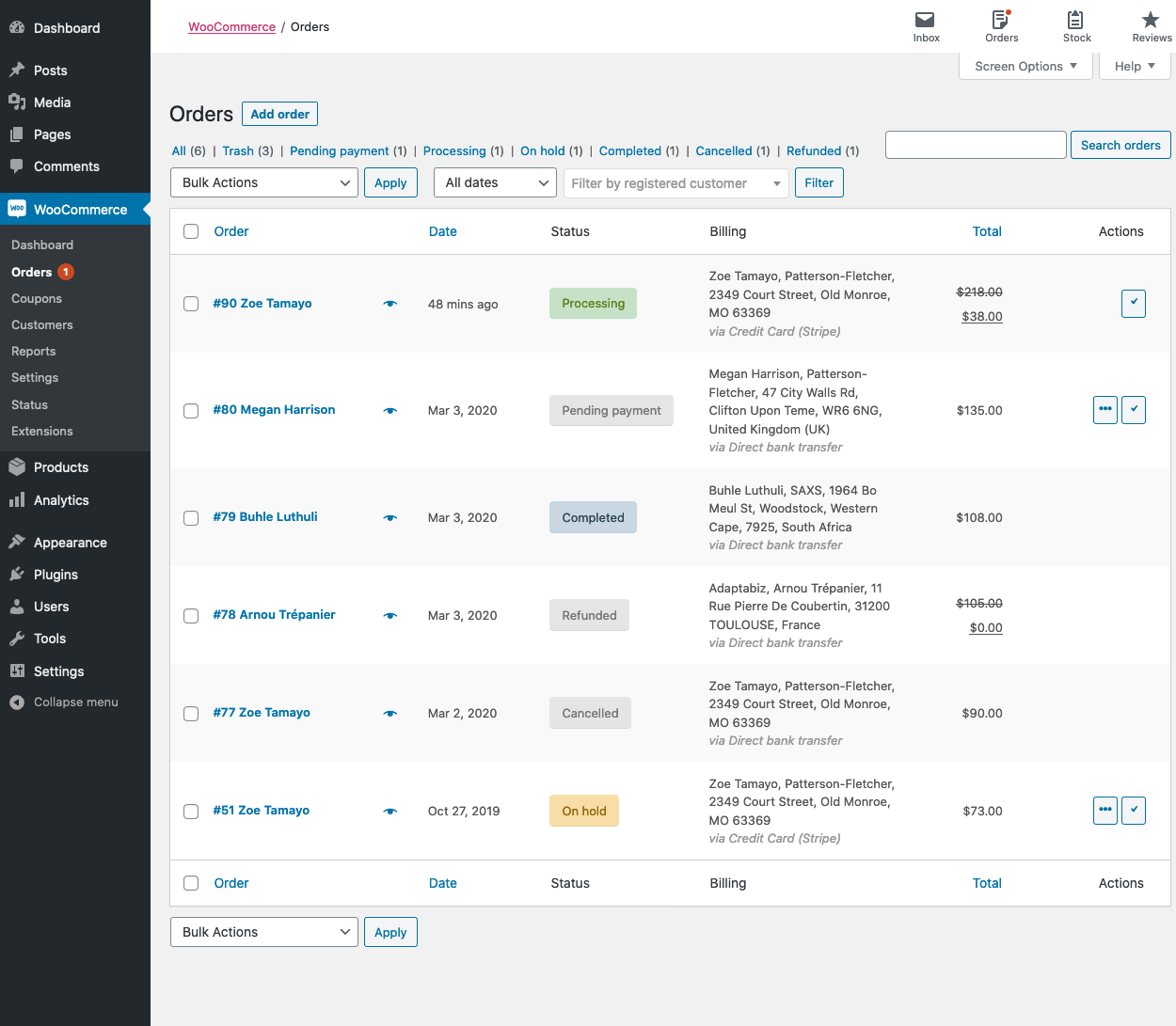
Filter and Arrange orders
Filter orders by Date (month/year) or by registered customer.
- Select the month, or search for a customer.
- Select Filter.
Arrange orders in ascending or descending order by Order number, Date or Total by select the heading.
Note that the “Total” column does not take the refunded amount into consideration.
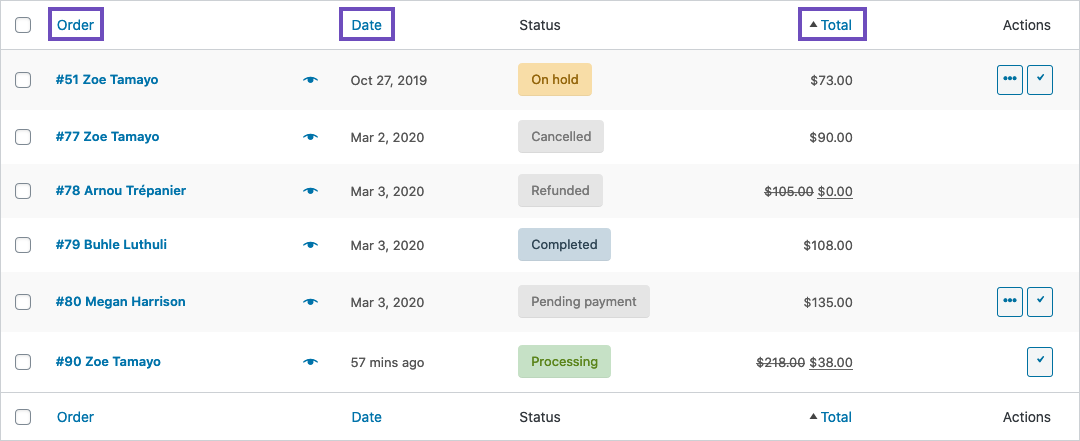
Click the order number and customer name to see the Single Order page, where you can also Edit order details, Update Status, and Add Notes.
Filter and Arrange orders
Orders can be found using the search box at the top right of the order list. Enter an order number, customer name, or other information shown in the order list such as address. Click Search orders or tap return on your keyboard and search results will show a list of matching orders.
From the Single Order page not only can you view all order data, but also edit and update.
- Change the order status.
- Edit order items – modify the product, prices, and taxes.
- Stock – Reduce and restore stock for an order
- Order Actions – Email order details to customer (handy if manually creating an order for your customers) or Regenerate download permissions
- Modify product Meta to edit product variations by removing and adding meta
- Apply coupons. You will need to know the coupon code to apply to the order. Coupon usage counts are tracked, and coupons can also be removed from orders. Note: the order must be unpaid for coupons to have an affect
- Add fee. You can enter an amount or percentage to add a fee to an order. Negative fees will apportion taxes between all other items, and will not make the cart total go below zero
The Order Details panel you can view:
- Order number
- Payment details
- Order date and time
- Order status
- Customer details:
- Username and email, together with a link to view their profile and other purchases the customer may have had in the past
- Billing details
- Shipping details
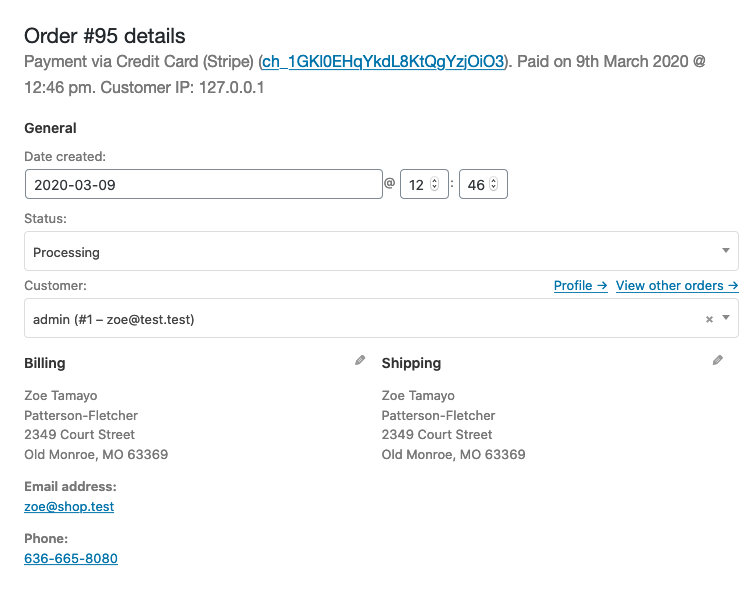
Most of the details in this section can be updated and/or changes.
- To change the date and time, use the dropdown date selector and the quantity selectors for the time.
- To change the status, choose the right status in the dropdown.
- To change the customer, select the current customer and search for the new customer.
Under “Billing” and “Shipping”, several other details can be changed. In order to do so, select the pencil icon next to each of them.
- Under “Billing”, the following things can be changed:
- Billing address — this can also be loaded from the customer’s profile by selecting “Load billing address”
- Phone number
- Payment method and details
- Under “Shipping”, the following things can be changed:
- Shipping address — this can also be loaded from the customer’s profile or copied from the billing address
- Customer provided note
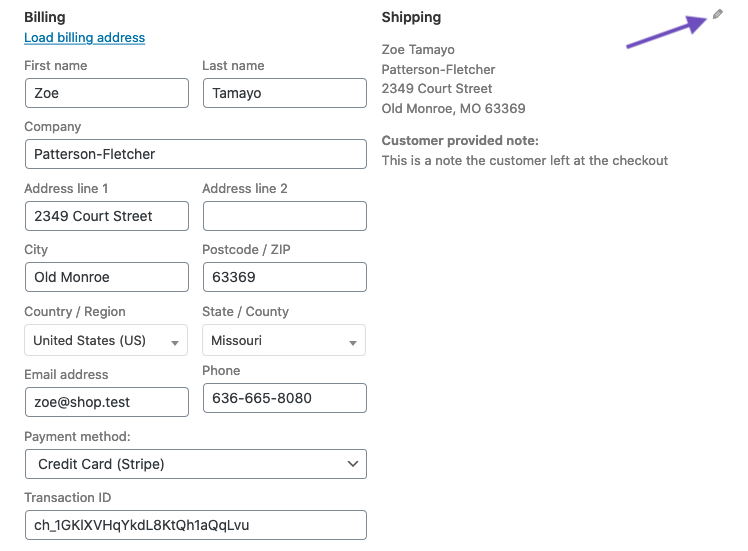
Viewing Order Items
The next panel on the order page is the Order Items panel. This contains the product items, the shipping details, and the order summary.
- Each product item row lists:
- Product image
- Product name
- Single product Cost
- Quantity
- Total (Cost x Quantity, with discounts taken into consideration)
- Taxes
- Below that, the shipping details are displayed. This will include:
- Shipping method
- Boxed items
- Total cost
- Taxes
- The last section contains an overview of the order costs. This section will change if an order is refunded. By default, it will include:
- Items subtotal — cost excluding tax
- Coupon(s) — amount deducted based on the use of coupons; the coupons used are displayed left in this section
- Shipping — the shipping cost for the order
- Taxes — the amount of taxes for the whole order; this will be replaced by the tax code applied to the order
- Order total — the total of the above costs
- Finally, below the line, an overview of what is paid and the fees taken by payment gateways
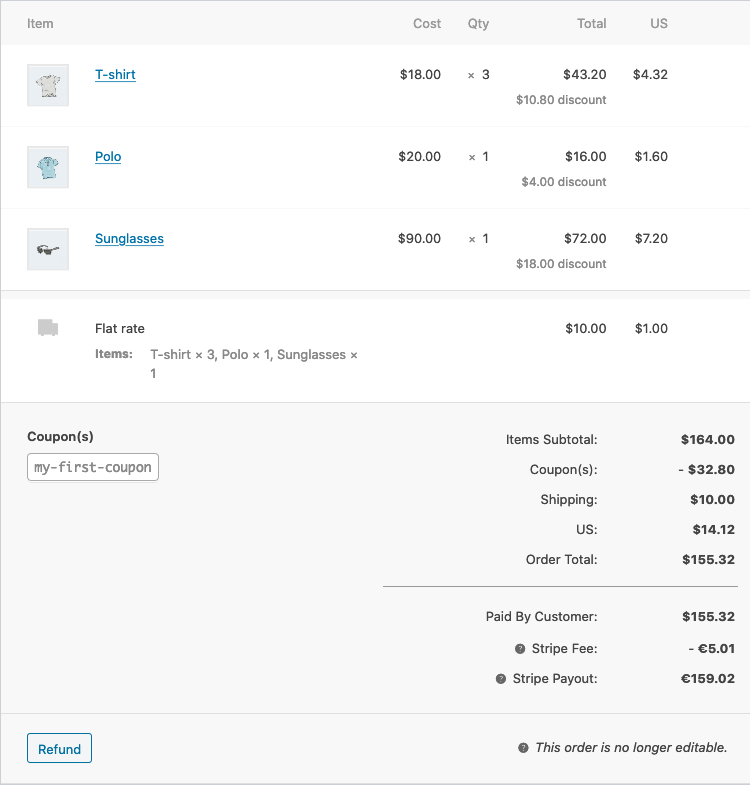
Product items. Select the pencil icon next to a product line to edit.

The following product items can be edited:
- Add Meta — Add and remove meta to change product variable options.
- Quantity — Number of items the customer is purchasing.
- Total — Line price and line tax before pre-tax discounts.
- Tax — Tax cost. For example, if a customer is tax-exempt you may want to remove the taxes.
Other actions. Next, you can do four actions at the bottom of this window:
- Add item(s) — this will show you six new options:
- Add product(s) — Add additional products to the order.
- Add fee — Add an additional fee, such as gift wrapping.
- Add shipping — Add a shipping cost. When you’ve done this, select the pencil icon to update the name, the method, the cost, and the tax.
- Add tax — Add an additional tax code to every section in the order.
- Cancel — Cancel if you do not want to make any changes.
- Save — Save once the changes are made.
- Once you’ve done this, you can select Recalculate if you want to automatically perform new calculations based on store settings. This can be handy if you are adding or removing products, coupons, shipping methods, etc. Note that any tax changes that you’ve manually included will be removed as the tax settings in your store will apply based on the customer address.
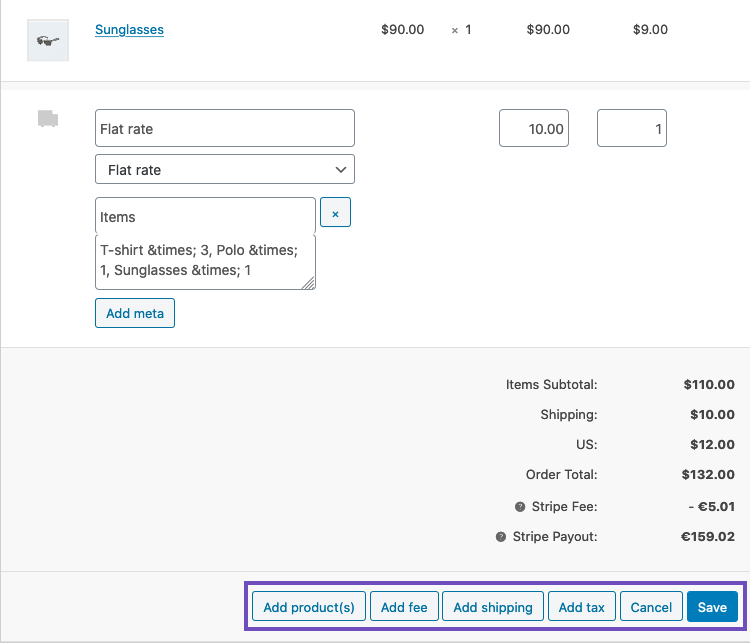
- Apply coupon — If your customer forgot to add the coupon could or you want to reward the customer before they pay, selecting this option will show a modal that allows you to apply a coupon code.
- Refund — to refund the customer. For more information about Manual and Automatic Refunds
-
The Order Notes panel displays notes attached to the order and can be used for storing event details, such as payment results or reducing stock levels, or adding notes to the order for customers to view. Some payment gateways also add notes for debugging.
The following note types are possible:
- Purple: System status notices, such as payment gateway details.
- Grey: General status updates, such as status changes or private notes. Customers do not see these notes but may receive notification of them, e.g., when the status changes from processing to completed, an email may be sent (depending on your settings).
- Blue: Notes to the customer. Customers receive notes via email but can view them by viewing an order in their My account section.
Notes can be a powerful tool for communicating with customers or other store managers. Need to add a tracking number for shipping? Is stock delayed? Add a customer note, and they are automatically notified.
